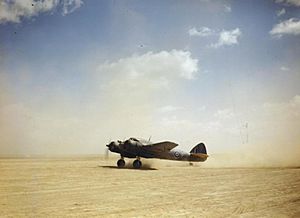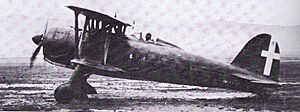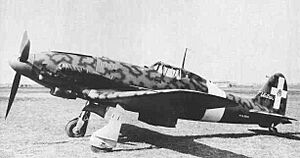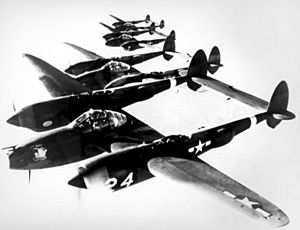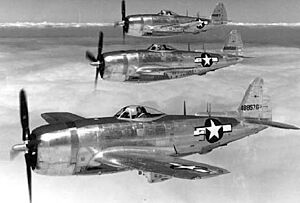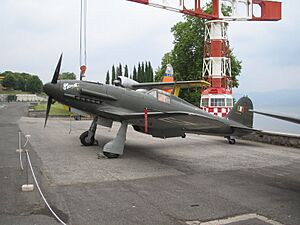Luigi Gorrini facts for kids
Quick facts for kids
Luigi Gorrini
|
|
|---|---|
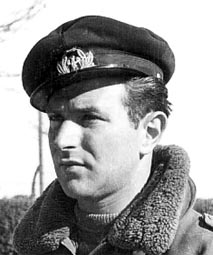
Sergente Maggiore Luigi Gorrini (D'Amico-Valentini archive)
|
|
| Born | 12 July 1917 Alseno, Kingdom of Italy |
| Died | 8 November 2014 (aged 97) Alseno, Italy |
| Buried |
Castelnuovo Fogliani
|
| Allegiance | Fascist Italy Italian Social Republic |
| Service/ |
Regia Aeronautica Aeronautica Militare Italiana |
| Years of service | 1933 – 1945 |
| Rank | Sergente Maggiore |
| Unit | 85ª Squadriglia, 18° Gruppo, 3° Stormo (RA); 1° Gruppo (ANR); 50°Stormo AMI |
| Battles/wars | Second World War |
| Awards | Medaglia d'Oro al Valor Militare "a vivente" Medaglia di Bronzo al Valor Militare German Iron Cross first and second class |
Luigi Gorrini (born July 12, 1917 – died November 8, 2014) was a brave Italian fighter pilot during World War II. He flew for the Regia Aeronautica (the Royal Italian Air Force) and later for the Aeronautica Nazionale Repubblicana (the National Republican Air Force).
Gorrini fought in many important battles. These included the Battle of Britain, fights over Libya and Tunisia, and defending Italy itself. He was known for shooting down many Allied planes. People believe he shot down 19 enemy planes, and some sources say it was as many as 24! He also damaged 9 more.
He flew different types of planes, like the biplane Fiat C.R.42 and the faster monoplanes Macchi C.202 and C.205 Veltro. The Veltro was his favorite, and he used it to shoot down 14 Allied planes and damage six others. When he passed away, Luigi Gorrini was the last surviving fighter pilot to have received Italy's highest military award, the Medaglia d'Oro al Valor Militare (Gold Medal of Military Valor).
Contents
Early Battles: North Africa and Greece
Luigi Gorrini began his combat career in North Africa. He was part of the 85th Squadriglia (a small group of planes). He achieved his first victory on April 16, 1941, over Derna in Libya.
He was flying a Fiat C.R.42 biplane alone, protecting the area. He spotted two Bristol Beaufighter planes, which were new to the Mediterranean. Gorrini attacked them before they reached his squadron's airfield. He hit the first plane's right wing. Even as the second Beaufighter tried to escape, Gorrini kept firing at the first one. The British plane crashed near the airfield. He was credited with one plane destroyed and one damaged.
On May 29, Gorrini found two Bristol Blenheim bombers over Benghazi. He shot down one, and the other got away after he ran out of bullets. Later, his unit returned to Italy to train on newer, faster planes like the Fiat G.50 and Macchi C.200.
In December 1941, Gorrini's group moved to Araxos in Greece. He spent the winter escorting supply ships between Italy and Greece. On December 17, he attacked two black-painted Bristol Blenheims near Argostoli port. He hit both planes, and they disappeared into the clouds. He was credited with one "probable" and one "damaged" victory.
Gorrini returned to Italy in April 1942. His unit then trained to use the C.200 as a fighter-bomber. In July, they went back to North Africa. There, Gorrini flew missions to protect Axis ships and attack ground targets.
In October, Gorrini's unit received the Macchi C. 202 planes. He said, "At last, with the Macchi 202 we had a competitive plane." On January 2, 1943, his squadron took off to fight American and British planes. These included Douglas DB.7 Boston and B-25 Mitchell bombers, protected by Spitfires and P-40s. In the intense air battle, Gorrini shot down a British Curtiss P-40E Kittyhawk. He also damaged a Spitfire that was attacking another Italian plane. His plane was hit 12 times, but he landed safely.
Nine days later, Gorrini's group escorted C.200 fighter-bombers attacking British airfields. Gorrini shot down a Spitfire and damaged another. His group often attacked Allied ground forces or escorted German bombers. On February 26, 1943, he escorted Stukas (German dive bombers) attacking Allied tanks in Ksar Ghilane, Tunisia. He also attacked enemy troops on the ground. Later that day, he claimed a Hawker Hurricane IID.
This was his last air battle in Africa. An eye injury got worse, and he had to go to the hospital. He returned to Italy in March 1943.
Defending Italy: The Veltro Ace
After recovering, Gorrini became a flying instructor. He also flew captured French Dewoitine D.520 fighters from France to Italy for home defense. He said the Dewoitine was a good plane, especially its 20mm cannon.
By early summer 1943, Gorrini had four confirmed victories. He was given one of the three new Macchi C.205 Veltro (meaning "Greyhound") planes assigned to his unit. This was a special honor. The Veltro was a very good fighter plane. During the summer of 1943, defending Italy, he claimed 11 enemy aircraft.
On July 19, west of Rome, Gorrini destroyed a four-engine B-24 Liberator bomber and a Lockheed P-38 Lightning. He also damaged another P-38. The next day, he claimed another P-38 destroyed and one damaged.
Even after Benito Mussolini was removed from power on July 25, Gorrini and his unit kept fighting. He said they were focused on flying and defending their homeland from bombing.
On August 13, Gorrini claimed a B-24 off the coast of Ostia. However, defensive fire from the bomber shot him down. He safely parachuted out of his plane. He claimed a Spitfire on August 26. The next day, his entire squadron scrambled to stop bombers attacking Cerveteri. Gorrini, still flying a Veltro, shot down two Boeing B-17 Flying Fortresses and a Lockheed P-38 Lightning in one fight. His plane was damaged, and he had to glide back to base for a landing without power. On August 29, he claimed two P-38s destroyed and two more damaged.
On August 30, Gorrini claimed another B-17 Flying Fortress over Frascati. He was mentioned in the official war report for his actions on August 27 and 29. On August 31, Gorrini's squadron took off to fight enemy bombers near Naples. They clashed with escorting Spitfires. Gorrini shot down one Spitfire (his 15th victory) and damaged a P-38. However, his plane was badly hit, and he had to make a forced landing. Gorrini was seriously wounded and sent to the hospital. He was out of the fighting when Italy surrendered on September 8, 1943.
In three years of fighting, Gorrini was in 132 air battles. He had 15 confirmed air victories, was wounded twice, crash-landed once, and parachuted out once. He received several awards for his bravery.
Fighting for the Italian Social Republic
On October 12, 1943, a new Italian air force was formed, called the Aeronautica Nazionale Repubblicana (ANR). Its leader asked airmen to join. Gorrini decided to rejoin the fight against the Allied forces. He explained that he had made friends with German pilots and wanted to protect northern Italian towns from bombing.
On December 23, 1943, Gorrini joined the ANR and continued to fly C.205 fighters. His unit was led by the famous pilot Capitano Adriano Visconti. On January 30, 1944, Gorrini's group fought American bombers and their P-47 escorts. Gorrini shot down a Republic P-47 Thunderbolt that had attacked another Italian pilot. He then damaged a B-24. He also shot down another P-47 that was attacking a German plane near his base. The next day, he claimed a P-38.
He claimed a B-17 on March 11 and another P-47 on April 6, bringing his total victories to 19. On May 24, 1944, Gorrini achieved his last air victory. He and another pilot intercepted B-24 bombers and their escorts. Gorrini set a B-24 on fire. However, two P-47 Thunderbolts attacked his leader and shot him down. The next day, Gorrini claimed a B-17 damaged.
On June 15, 1944, over Modena, Gorrini fought his last air battle. He was suddenly surrounded by four P-47 Thunderbolts. His plane was hit, and Gorrini had to parachute out. He waited until he was close to the ground to open his parachute, fearing the American pilots might shoot at him. When he opened it, the harness was loose, and he was jerked violently, losing consciousness. He woke up in a hospital. After recovering, he was sent home. He did not fly again during World War II.
Luigi Gorrini summed up his amazing career: "212 air combat, 24 solo air victories, 5 parachute jumps."
After the War
After World War II, Gorrini joined the new Italian Air Force (Aeronautica Militare Italiana). However, due to opposition from the Allies, he was kept at the rank of warrant officer. He was finally promoted to Tenente (Lieutenant) when he retired. Luigi Gorrini passed away on November 8, 2014, in Alseno.
Awards
Gorrini received the Medaglia d'oro al Valor Militare in 1958. He also received the Bronzo twice and the German Iron Cross (First and Second Class). He was the only ANR pilot to receive Italy's highest military award after the war for his actions before Italy surrendered in September 1943.


